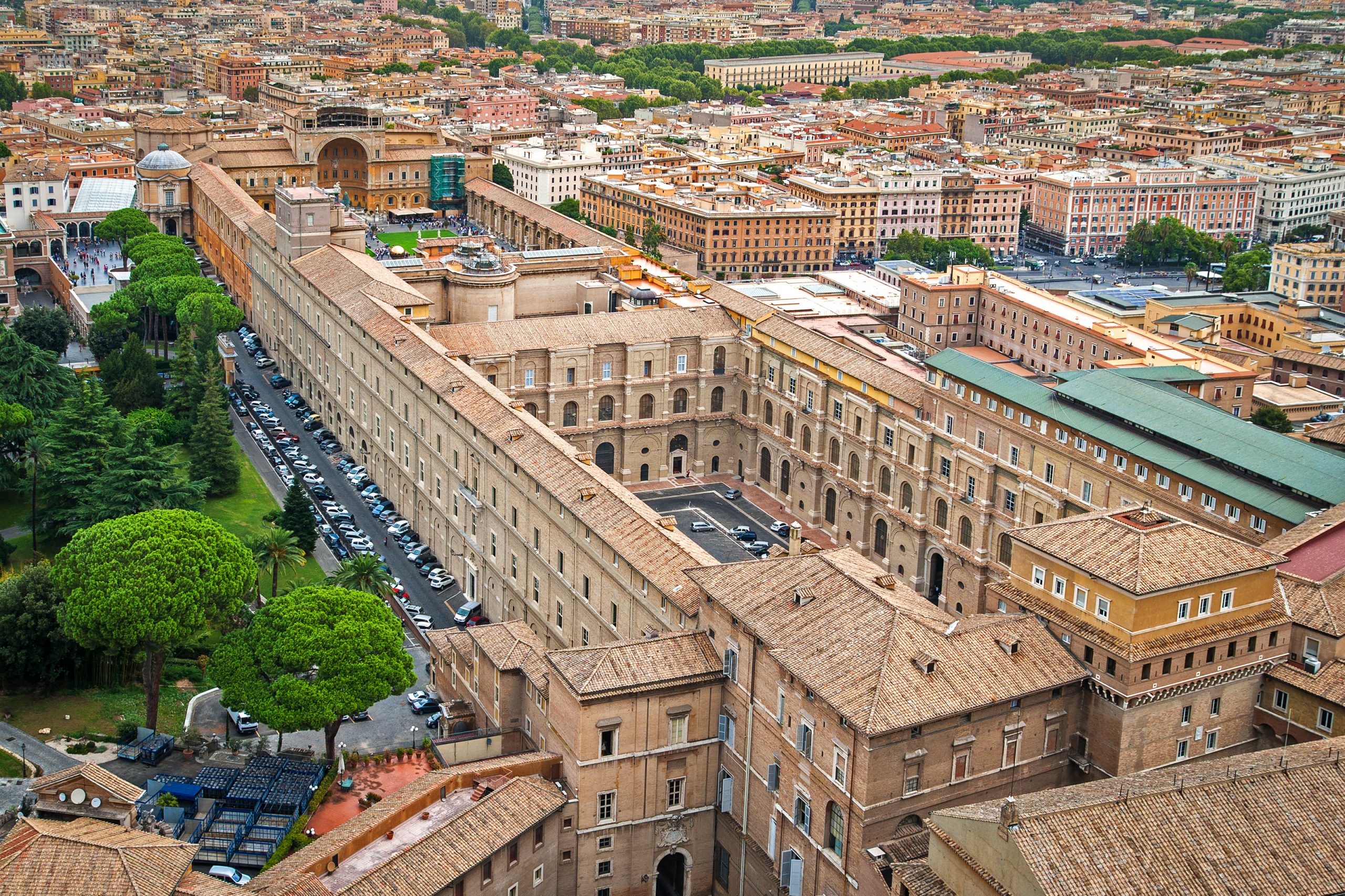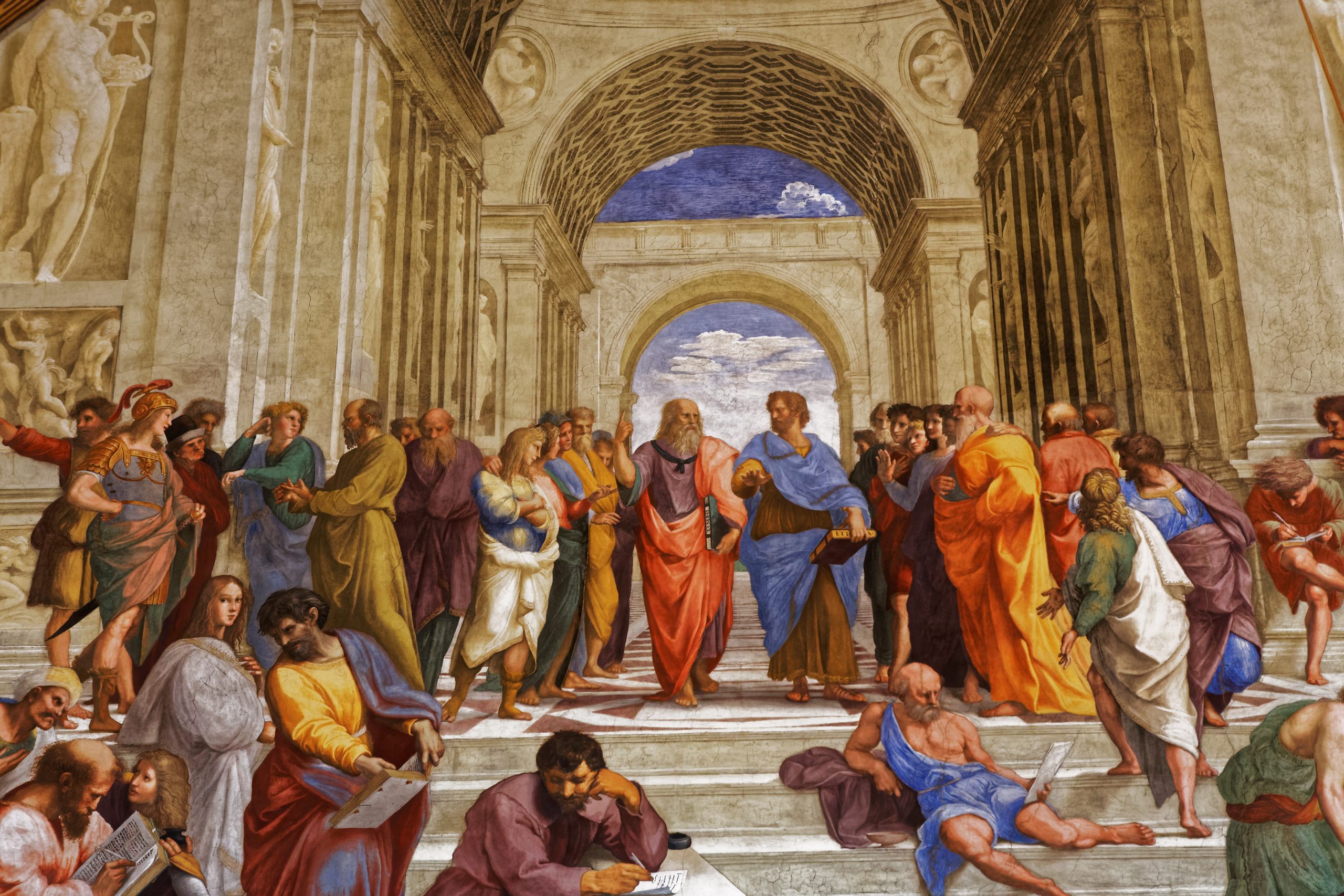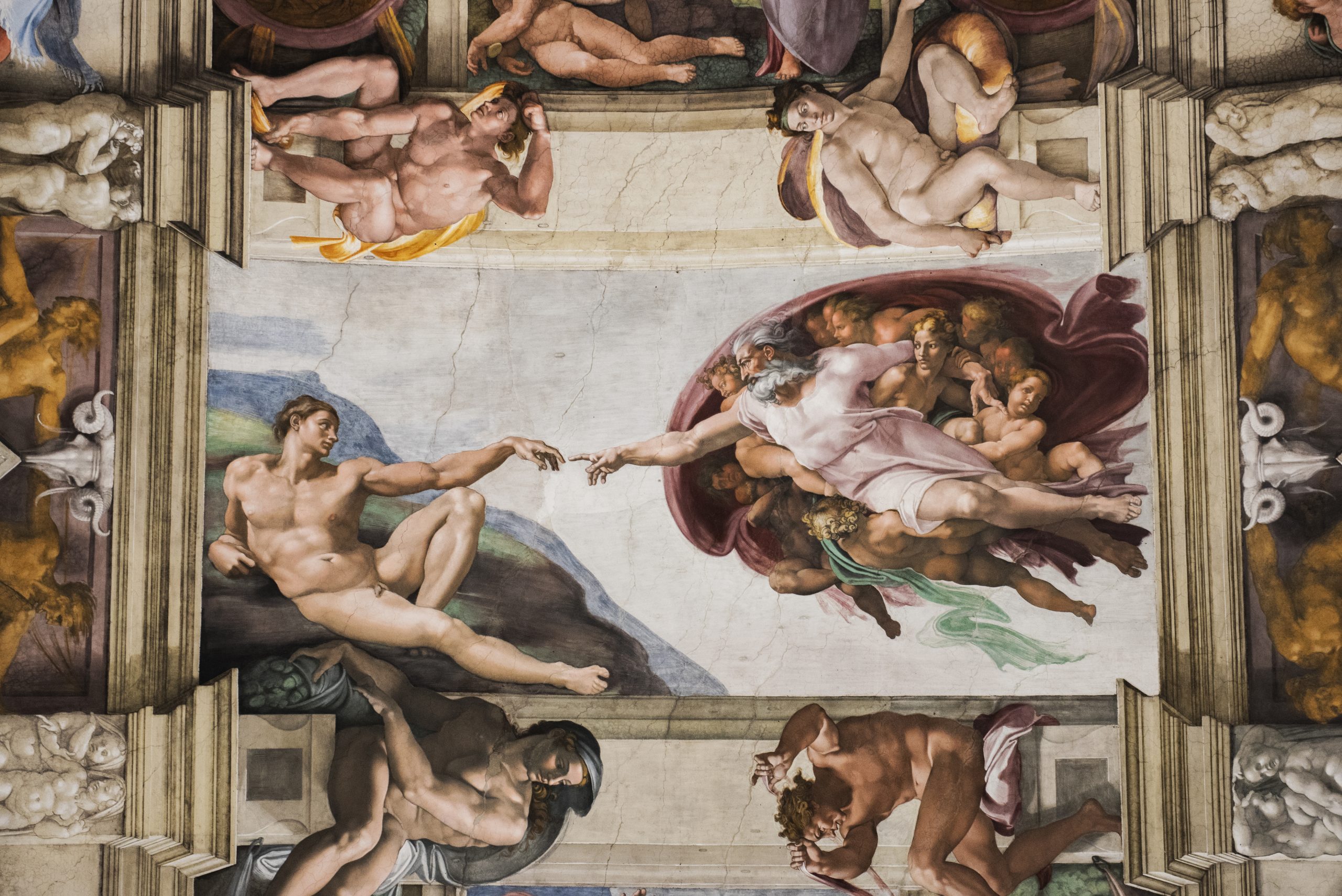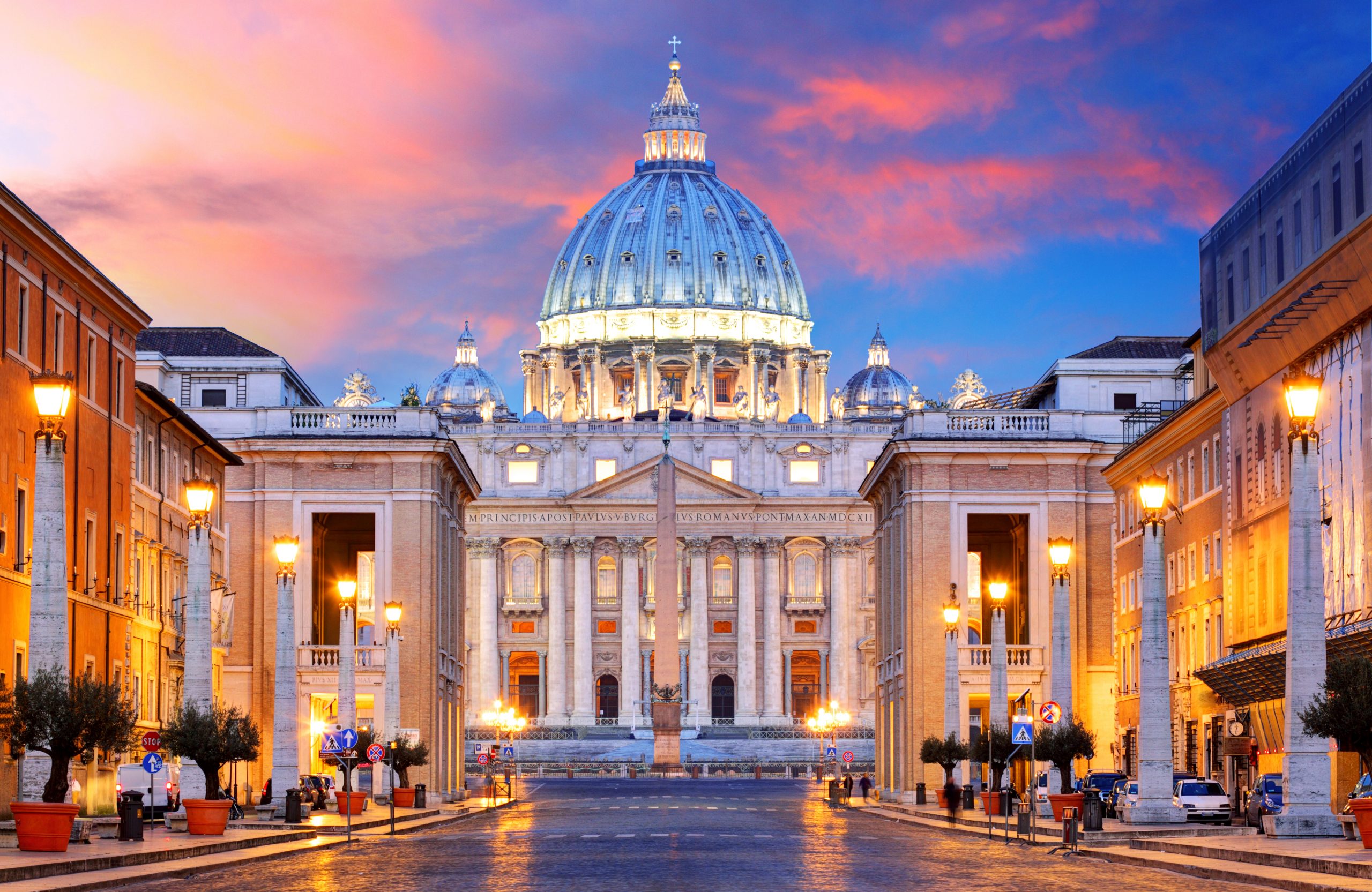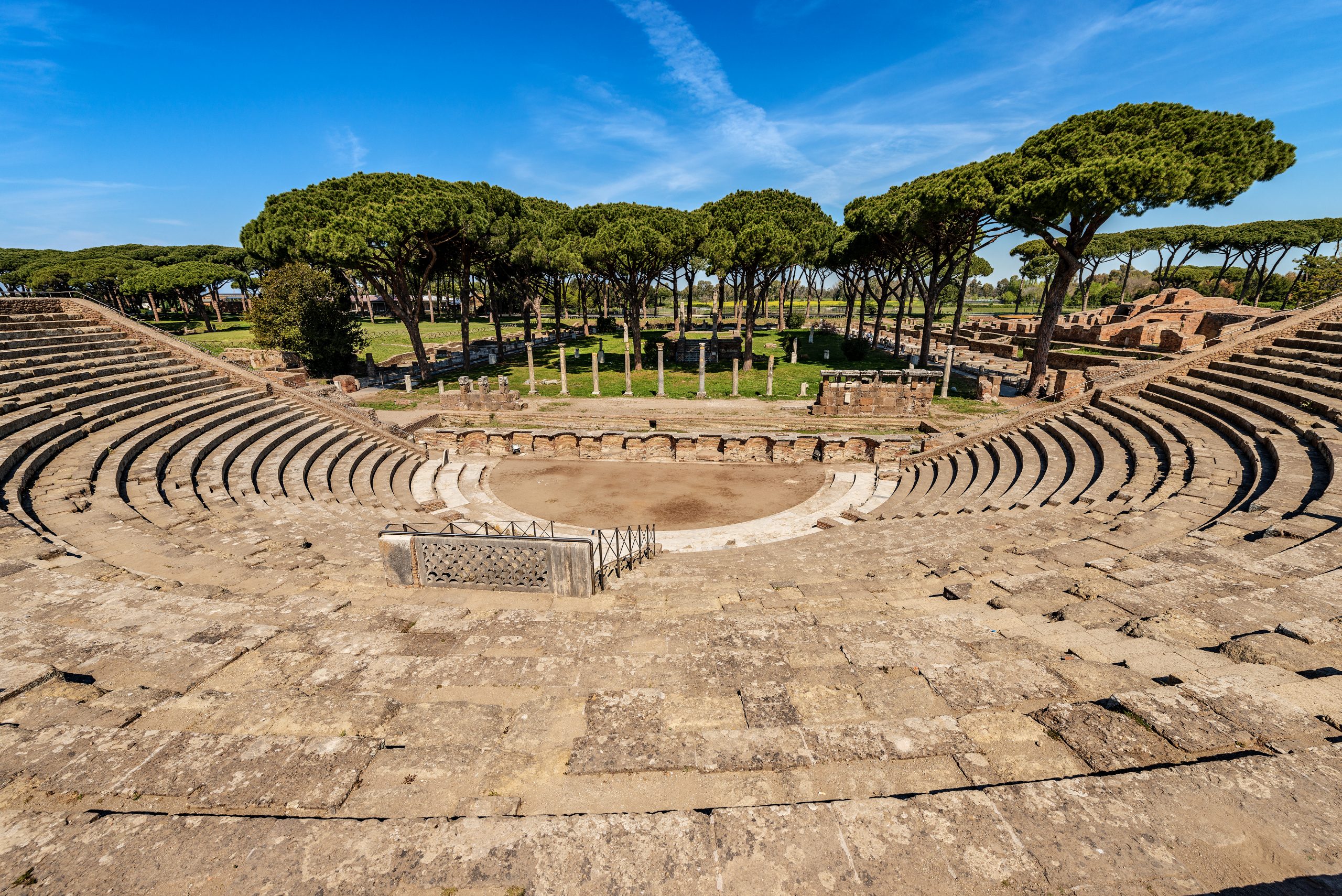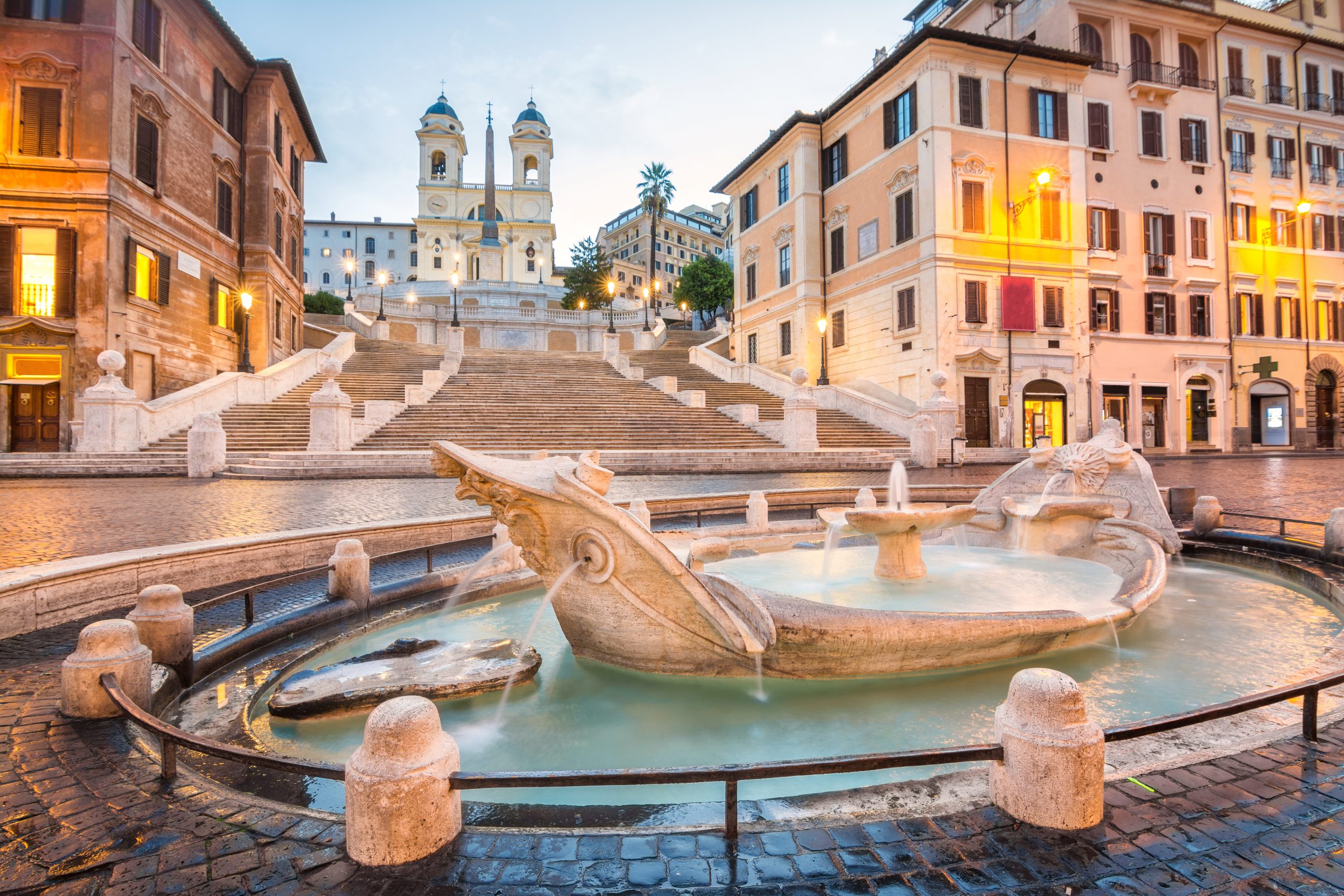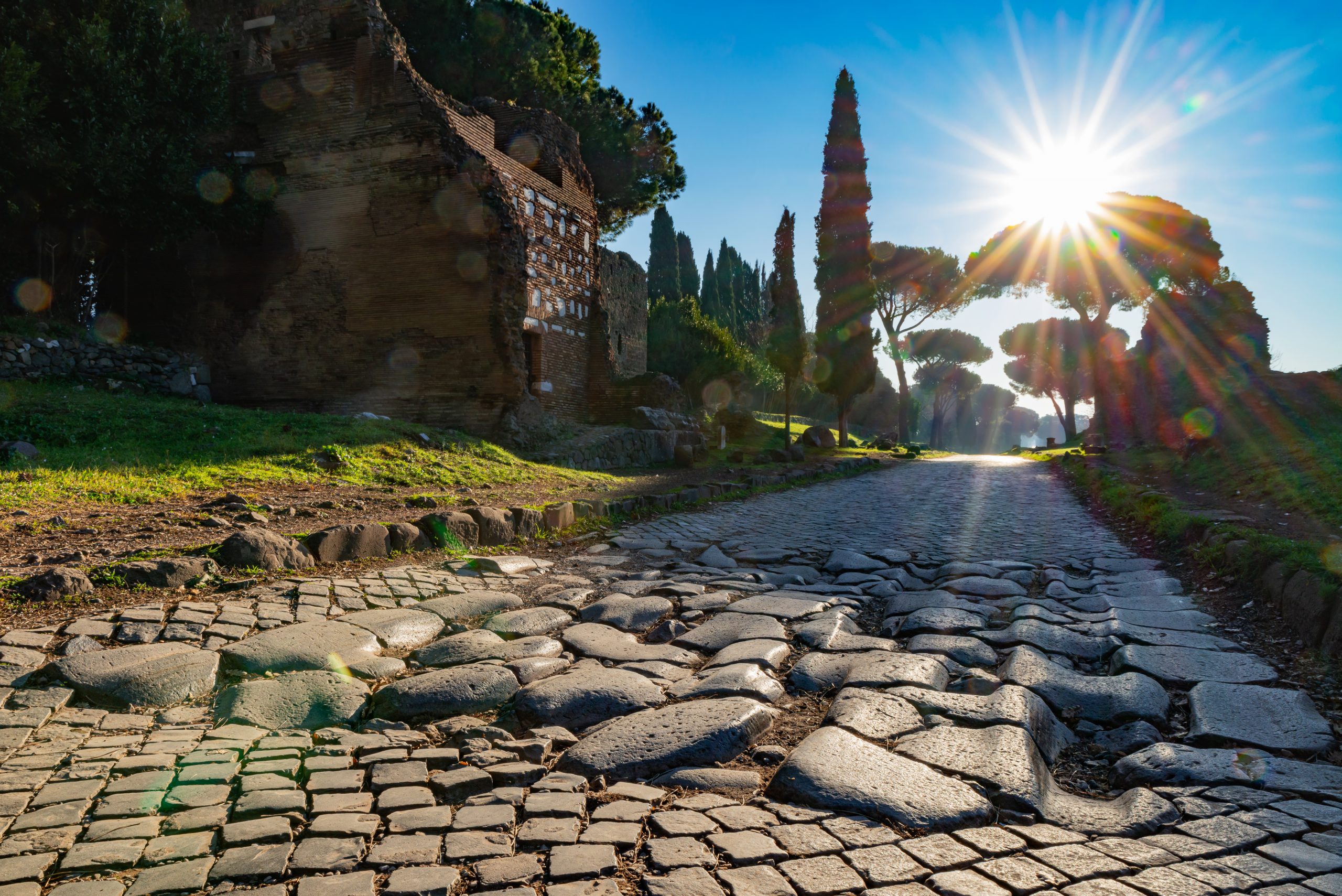Vatican Sistine & Chapel
The Vatican is one of the most visited sites in Rome for its three main attractions: The Vatican Museums with one of the world’s largest art collections, the Sistine Chapel with its famous decorations by Michelangelo and St Peter’s Basilica – the largest church in the world built on top of the bones of St Peter. Some of the world’s most treasured paintings, sculptures and frescoes lie within the Vatican walls. The walls mark the boundaries of Vatican City – the smallest country in the world at 0.2 square miles.
When visiting the Vatican, we should remember that it was never built as a museum. This is a former palace with a series of 1400 rooms, extended and redecorated by generations of popes. The hallways are sumptuously decorated with tapestries, candelabras, paintings, sculptures and frescoes.
All of this represents the combined lifetime collections of the popes from the 16th century to the present and stretches as far back as ancient Egypt, Greece and Mesopotamia. Don’t forget to look down as many of the rooms are decorated with original ancient Roman mosaics from Ostia Antica With a staggering twenty two different galleries, the Vatican boasts one of the largest collection of Renaissance art, ancient statuary and artefacts in the world; the most famous are probably the Museo Pio-Clementino, with its splendid classical sculpture including the Laocoön and Belvedere Torso that inspired the great Michelangelo; the Raphael Rooms – entire rooms painted by Raphael including his ‘School of Athens’; the Pinacoteca (picture gallery) with medieval and renaissance paintings and of course the Sistine Chapel.
.
The frescoes capture stunning depictions of biblical scenes from the book of Genesis, as we gaze upwards, scenes of the creation unfold before our eyes; of the universe, of Adam and Eve, their fall from grace and their descendants. Running along the side of the walls are scenes from the life of Moses and the life of Christ – the work of the Renaissance heavyweights who came before Michelangelo like Botticelli, Ghirlandaio and Perugino Raphael’s teacher. Spanning the entire back wall is Michelangelo’s dramatic Last Judgment, painted over thirty years later. Its rich blue hue provides the backdrop for a swirling mass of characters’ who are either saved or damned to hell. It is astonishing to think that Michelangelo only grudgingly painted the ceiling after being threatened by the pope. The ceiling took almost four years to complete, a feat that he claimed to have completed almost entirely alone and would complain bitterly about for the rest of his life.
Saint Peter’s Basilica is usually the last stop for visitors at the Vatican, guided tours use a side door which allows direct access from the Sistine Chapel to the basilica. Saint Peter’s Basilica is the most important papal Basilica in Rome, according to Catholic tradition, built above the final resting place of St Peter. It was here that Constantine, Rome’s first Christian emperor built a basilica to celebrate Saint Peter. The church we visit today is the brainchild of Julius II ‘the warrior pope’ who wanted to build the largest church in Christendom to put Rome back on the map. His church would take over twelve popes, eight different architects and one hundred and twenty years to complete,
but today it stands as the jewel of all catholic churches. Michelangelo became the lead architect of Saint Peter’s and designed the dome that can be seen from all over Rome, although he would never live to see it finished. As you walk through the doors into the church you are struck by its immensity, the dome rises up over 136 metres in height and is the tallest building in Rome (by law no building can be higher) as well as being the largest church in the world. Take a look at the central area of the long nave and you will see the dimensions of other important churches listed on the floor.
As soon as you enter on the right you are greeted by Michelangelo’s work yet again in the form of the virgin Mary holding the lifeless body of her adult son. ‘The Sorrow’ or ‘La Pieta’ is undoubtedly his most beautiful sculpture and the only one he ever signed. Michelangelo was only 23 when sculpted La Pieta, it was commissioned by a French cardinal for his chapel in the previous Basilica. Michelangelo’s next big commission would be the David in Florence.
Further along from the Pieta is the grave of Pope John Paul II one of the many popes buried in the basilica and in the grottoes below (accessed by a door under Saint Andrew). Don’t miss the medieval bronze statue of Saint Peter which once stood in the old basilica – notice his feet which have been rubbed away by countless thousands of pilgrims.
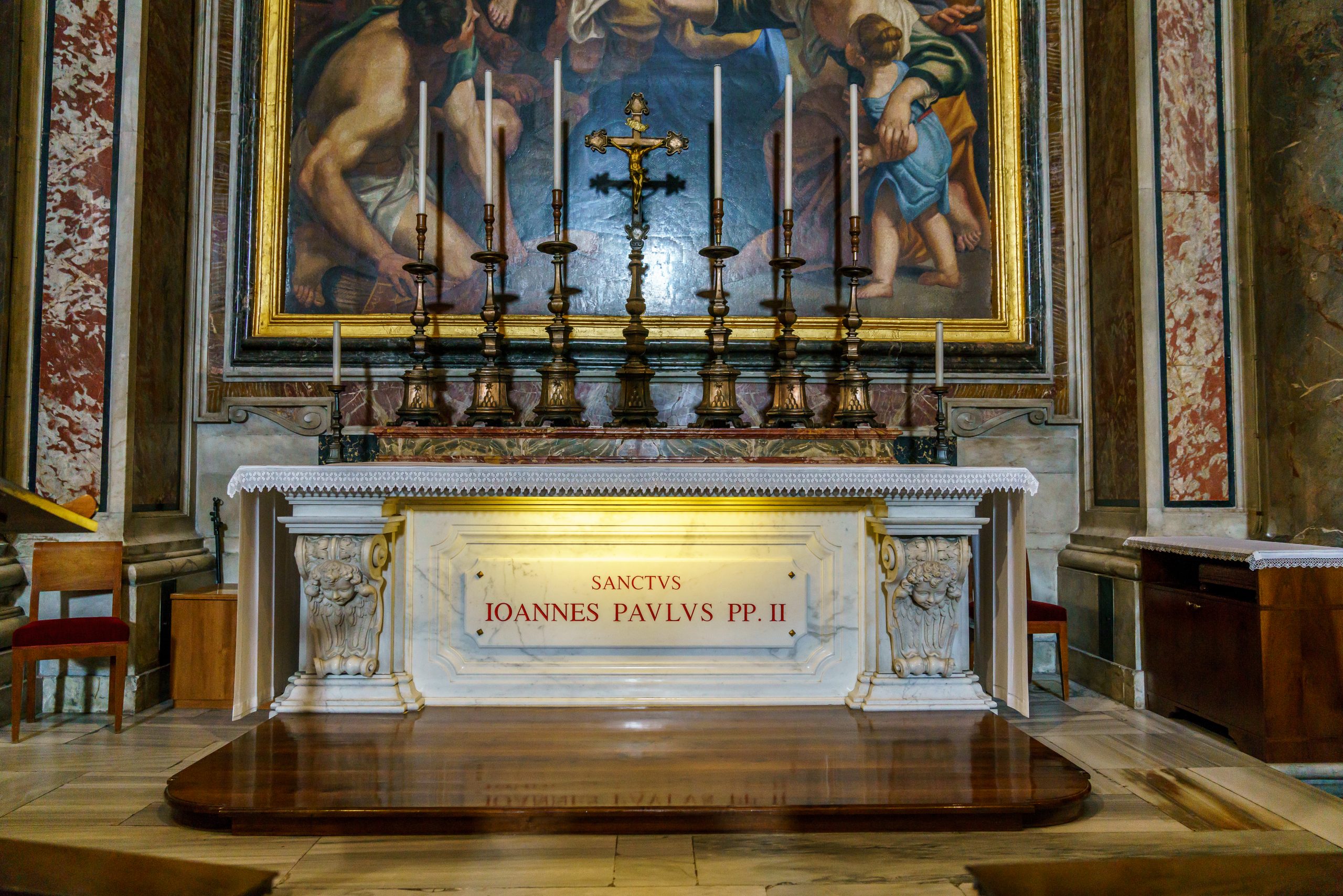
As you explore the cavernous basilica, you will be drawn to the centre where you will find Bernini’s extravagant twisting bronze canopy or Baldacchino that rises almost 100 feet above the papal altar. Its majestic proportions leave visitors awestruck, even more so when we realise the symmetry – the sepulchre of saint peter, the baldacchino the dome and the cross on top of the church are all perfectly aligned.
Below the Basilica (accessed by a staircase underneath St Matthew) are the Papal tombs or grottos where you can find the graves of numerous popes dating back to the 9th century. Many of the papal tombs were destroyed during the demolition for the new basilica. Here you can also see the archaeological remains of the earlier basilica.
For those who still have energy, a climb to the top of the dome offers breath-taking views inside and out. Not for the faint hearted at 551 steps to the top (or 320 with the elevator), but the 360-degree panorama from the top is a once in a lifetime experience.
Tickets for the Vatican Museums and Sistine Chapel should be booked in advance as the museums can be crowded in high season. Guided tours offer the highlights of the museums and the Sistine Chapel and usually include privileged access and an explanation of St Peter’s Basilica. Entrance to Saint Peter’s Basilica is free, but separate tickets are required to visit the dome.
